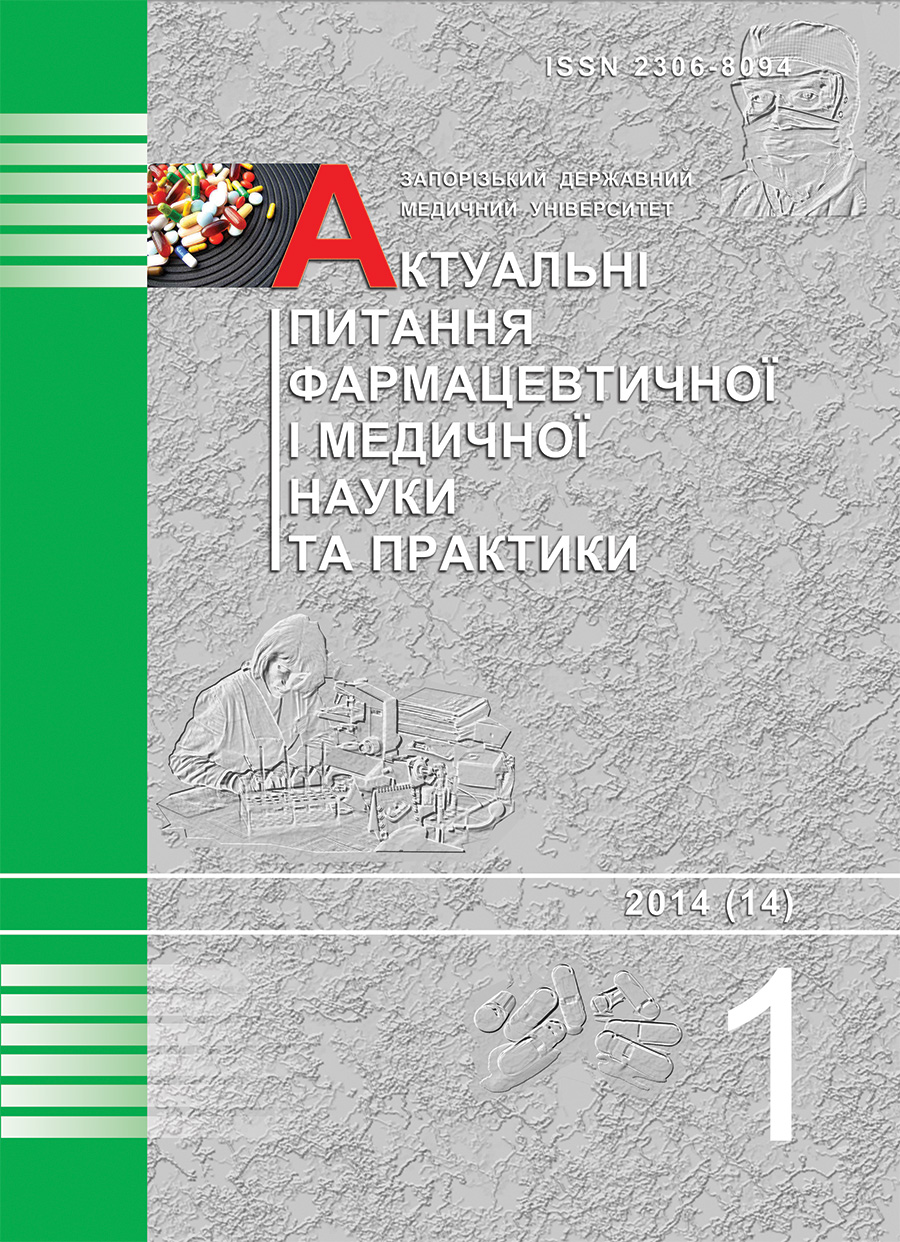Features of blood serum protein spectrum and cytokine spectrum of rats with chronic carrageenan-induced intestinal inflammation
DOI:
https://doi.org/10.14739/2409-2932.2014.1.24843Keywords:
carrageenan, gastroenterocolitis, protein spectrum, TNF-α, interleukinsAbstract
It has been established that features of modern diet might be considered as a possible source of inflammatory diseases of gastrointestinal tract. Particular attention is paid to the role of different food additives in the development of intestinal inflammation, including the food additive E407, known as carrageenan. A model of chronic carrageenan-induced gastroenterocolitis of moderate severity has been elaborated, which allows us to study carrageenan-induced intestinal inflammation. In particular, the features of blood serum protein spectrum and cytokine spectrum in chronic carrageenan-induced intestinal inflammation are not studied.
The female Wistar rats have been used for the experiment. Chronic carrageenan-induced gastroenterocolitis has been reproduced by the free access of animals to 1% solution of carrageenan in drinking water. Laboratory animals have been divided into 3 groups. Group № 1 consisted of experimental animals, who consumed food additive carrageenan during 2 weeks and group № 2 included experimental animals, who consumed food additive carrageenan during 4 weeks. Group № 3 consisted of intact healthy animals. The development of gastroenterocolitis has been proved morphologically and biochemically. Manipulations with animals have been carried out in accordance with the provisions of the European Convention for the Protection of Vertebrate Animals used for Experimental and other Scientific Purposes (Strasbourg, 1986).
It has been established that the disease has been associated with dysproteinemia. The level of α1-globulins increased after 2 weeks of carrageenan consumption and has been normalized in animals, who consumed carrageenan during 4 weeks. The similar changes have been observed for α2-globulins level. It could be explained by production of acute phase proteins, such as α1-acid glycoprotein, C-reactive protein, fibrinogen, α2-macroglobulin, ceruloplasmin, etc. The intake of carrageenan also caused hypergammaglobulinemia that was more significant in animals of the 2nd group.
The development of chronic carrageenan-induced gastroenterocolitis has been also accompanied by elevated levels of pro-inflammatory cytokines, such as TNF-α and IL-1α, and anti-inflammatory cytokine IL-4 inblood serum of rats. The elevated levels of TNF-α and IL-1α might explain observed changes of blood serum spectrum, particularly increased α1-globulins and α2-globulins. A significant increase in IL-4 content in the blood of animals with chronic carrageenan-induced gastroenterocolitis may be responsible for the increased permeability of the intestinal mucosa to luminal antigens and bacterial translocation across the intestinal wall and their subsequent influence on the pathological process.
References
Ткач С.М. Настоящее и будущее гастроэнтерологии / С.М. Ткач // Здоров’я України. – 2008. – № 7. – C. 33–34.
Соколова Е.В. Изучение in vitro и ex vivo антиоксидантной активности каррагинанов – сульфатированных полисахаридов красных водорослей / Е.В. Соколова, А.О. Барабанова, В.А. Хоменко // Бюллетень экспериментальной биологии и медицины. – 2010. – Т. 150. – № 10. – С. 398–401.
Irvine E.J. A critical review of epidemiological studies in inflammatory bowel disease / E.J. Irvine, F. Farrokhyar, E.T. Swarbrick // Scand. J. Gastroenterol. – 2001. – Vol. 36(1). – P. 2–15.
Патент на винахід «Спосіб моделювання хронічного гастроентероколіту» від 25.01.12 р. № 97322.
Ткаченко А.С. Уровень VEGF и ФНО-α при хроническом каррагенан-индуцированном гастроэнтероколите / А.С. Ткаченко // Вісник проблем біології і медицини. – 2013. – Т. 2(103). – Вип. 3. – С. 231–234.
Posokhov Ye.O. Influence of carrageenan (E 407) on the membrane of enterocytes investigated by fluorescent probes / Ye. Posokhov, A.S. Tkachenko, Ye.M. Korniyenko // Вісник проблем біології і медицини. – 2013. – Вип. 1. – Т. 1(98). – С. 229–233.
Pricolo V.E. Effects of lambda-carrageenan induced experimental enterocolitis on splenocyte function and nitric oxide production / V.E. Pricolo, S.M. Madhere, S.D. Finkelstein // J. Surg. Res. – 1996. – Vol. 66. – № 1. – P. 6–11.
Westermeier R. Electrophoresis in Practice / R. Westermeier // Weinheim-New York: WILEY-VCH. – 2001. – P. 350.
Галь Э. Электрофорез в разделении биологических макромолекул / Э. Гааль, Г. Медьеши, Л. Верецкеи. – М., 1982. – С. 448.
Niederau C. Inflammatory mediators and acute phase proteins in patients with Crohn's disease and ulcerative colitis / С. Niederau, F. Backmerhoff, B. Schumacher [et al.] // Hepatogastroenterology. – 1997. – №. 94(13). – С. 90–107.
Di Leo V. Factors regulating the effect of IL-4 on intestinal epithelial barrier function. / V. Di Leo, P.C. Yang, M.C. Berin [et al.] // Int. Arch. Allergy Immunol. – 2002. – № 129(3). – P. 219–227.
Downloads
How to Cite
Issue
Section
License
Authors who publish with this journal agree to the following terms:
- Authors retain copyright and grant the journal right of first publication with the work simultaneously licensed under a Creative Commons Attribution License that allows others to share the work with an acknowledgement of the work's authorship and initial publication in this journal.

- Authors are able to enter into separate, additional contractual arrangements for the non-exclusive distribution of the journal's published version of the work (e.g., post it to an institutional repository or publish it in a book), with an acknowledgement of its initial publication in this journal.
- Authors are permitted and encouraged to post their work online (e.g., in institutional repositories or on their website) prior to and during the submission process, as it can lead to productive exchanges, as well as earlier and greater citation of published work (See The Effect of Open Access)

